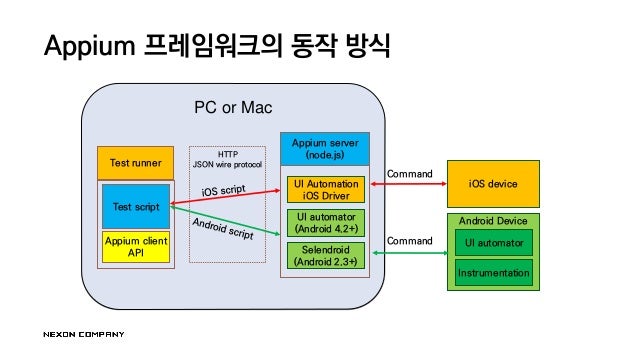

- #Appium android tutorial on mac emulator install
- #Appium android tutorial on mac emulator driver
- #Appium android tutorial on mac emulator manual
- #Appium android tutorial on mac emulator software
#Appium android tutorial on mac emulator driver
Public IWebDriver Driver ĭriver = AndroidDriverProvider. Name it “MobileApplication” and add it to the Appium folder. Now, let’s create a driver wrapper class. In this class, we are creating an instance of an Android driver with the settings mentioned in App.config. This class sets up and returns the driver for interacting with the UI of our Android application. It’s necessary to access settings in App.config.Īs the next step, add a new folder called “Appium.” Inside that folder, add another folder called “Drivers.” Then create a C# class called AndroidDriverProvider. Now, let’s add the folder “Environment” and a class Config.cs with the following code: using System It should look like this: īasically, with this setup all the tests will be executed sequentially in a single thread without any retries after failures. Now, open the file Default.srprofile (added after the SpecFlow package installation). In my case, I’m going to run tests on an emulator with the name “emulator-5554” for a YouTube application starting on “HomeActivity,” and my Appium server is set to a local machine. timeOut – global timeout for different testing purposes (for example, waiting for an element to be visible on the screen).appActivity – defines the activity to be executed from the app package.appPackage – package name of the application being tested.platformName – name of the platform (Android, iOS, etc.).deviceName – name of the device on which the tests will be running.Open it and add the following app settings: They can be found in Tools -> Extensions and Updates -> Online -> Search for “SpecFlow for Visual Studio” and “NUnit Test Adapter.” After the extensions are installed, please restart your IDE.
#Appium android tutorial on mac emulator install
We also need to install the NUnit Test Adapter and SpecFlow for Visual Studio extensions. When everything is done, our references should look like this: Project references Find and install the following libraries: Now let’s add SpecFlow, NUnit and Appium from the NuGet package manager. Open Visual Studio and create a new C# class library project. You can read about the Appium setup here and the Android SDK here. * We will assume that you have already installed Appium and the Android SDK. Let’s take a closer look at these frameworks and create a simple project for testing Android applications. Creating a simple test automation project It uses the WebDriver protocol for iOS, Android and Windows apps. It allows you to test native, hybrid and mobile web apps. AppiumĪppium is a test automation framework for use with mobile apps. It allows you to write human-readable scenarios for your tests, which can also be your living documentation. SpecFlow is an open source framework for behaviour-driven development (BDD). I would recommend these two: SpecFlow and Appium. There are a lot of different frameworks for testing on the market. What’s next?įirst, you need to determine the technologies you are going to use for the tests. Let’s imagine you have decided to automate tests for your mobile app. Entrust the more complex and critical tasks that will be difficult for the computer to handle to your QA, and let the routine work be done by the machine. How can this problem be solved? Test automation

That kind of work has a high risk of human error. However, for applications in active development, there might be several boring, repetitive and monotonous tests.
#Appium android tutorial on mac emulator manual
They write test cases, do manual testing and report bugs.
#Appium android tutorial on mac emulator software
Usually, the quality of the software being developed is monitored by the testers. Therefore, the requirements for the stability and quality of these applications are very high. Today, according to statistics, most visits come from mobile versions of a website or mobile applications. Just 10 years ago, a majority of users were surfing the internet on their PC.


 0 kommentar(er)
0 kommentar(er)
